Quick Summary
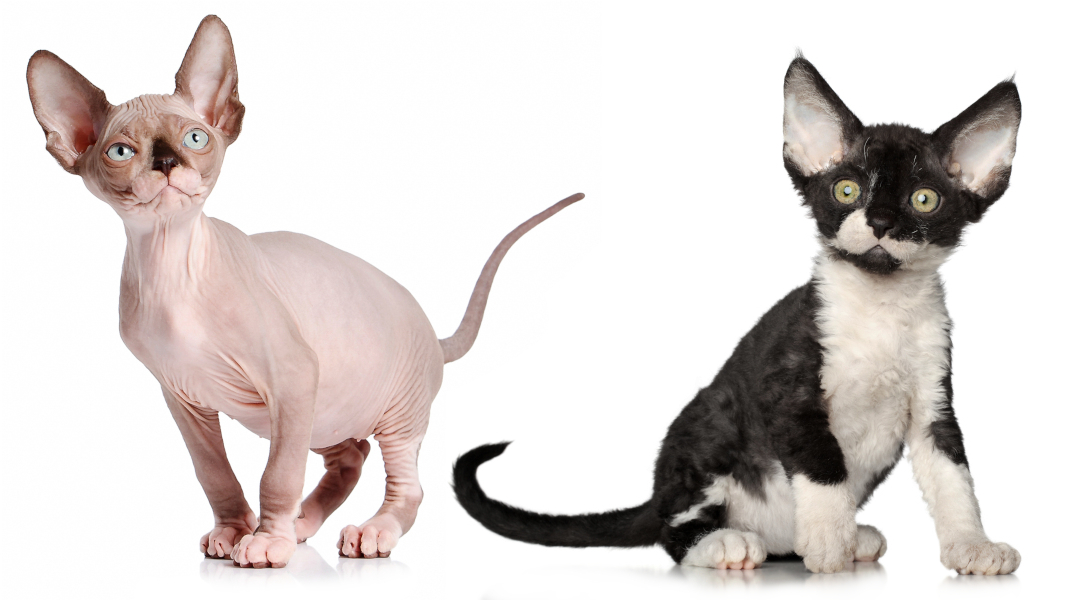
Click here for Price and Turnaround Time
Phenotype: Curly coat (Devon Rex); hairless coat (Sphynx)
Mode of Inheritance: Autosomal recessive
Alleles: N = Normal coat, HR = Sphynx hairless, DR = Devon Rex curly
Breeds appropriate for testing: Sphynx, Devon Rex
Explanation of Results:
- Cats with N/N genotype will have normal coats. They cannot transmit this hairless variant or this Devon Rex variant to their offspring.
- Cat with N/HR genotype will have normal coats, but are carriers of the hairless variant. They will transmit this hairless variant to 50% of their offspring. Matings between two carriers of the Sphynx hairless variant are predicted to produce 25% hairless kittens.
- Cats with N/DR genotype will have normal coats but are carriers of the Devon Rex curly variant. They will transmit this curly variant to 50% of their offspring. Matings between two carriers of the Devon Rex curly variant are predicted to produce 25% Devon Rex curly-coated kittens.
- Cats with HR/HR genotype will be hairless. They will transmit this hairless variant to all of their offspring.
- Cats with DR/DR genotype will have curly coats. They will transmit this Devon Rex curly variant to all of their offspring.
- Cats with HR/DR genotype will be hairless but do not "breed true" to the hairless phenotype; they can produce normal, hairless, or curly coated offspring depending on the genotype of the cat they are bred to.
Cat DNA tests are carried out using cells brushed from your cat's cheeks and gums using household cotton swabs.
The cat DNA submission form with instructions and a place to tape the cotton swabs is sent to you via email after you place an order, and can be printed from your home computer. DNA test kits are no longer mailed.
Instructions
Step-By-Step:
1.
 Purchase regular household cotton swabs for cat DNA collection (the cotton swabs can be purchased at a pharmacy or drug store)
Purchase regular household cotton swabs for cat DNA collection (the cotton swabs can be purchased at a pharmacy or drug store)
2.

Make sure the cat has not had anything to eat or drink for at least 1 hour prior to collecting sample.
When swabbing kittens, isolate each kitten from the mother, littermates and any shared toys for 1 hour prior to swabbing. Kittens should not have nursed or eaten for 1 hour prior to collecting sample.
If collecting samples from more than one cat, make sure to sample one cat at a time and wash your hands before swabbing another cat.
3.
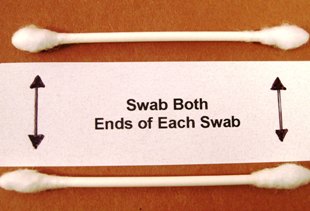 Use both ends of the two cotton swabs for a total of four swabs.
Use both ends of the two cotton swabs for a total of four swabs.
4.
Place the cotton head of the swab between the cat’s gums and cheek and rub or rotate the swab back and forth for 15 seconds. Repeat with each cotton swab head, for a total of 4 swabs. We recommend swabbing a different area of the gums with each swab head.
5.
Wave the swab in the air for 10-15 seconds to air dry it before attaching it to the submission form.
6.
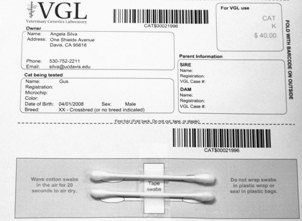 After swabbing the cheek and gums, tape the cotton swabs to the bar-coded submission form printed from your MyVGL account.
After swabbing the cheek and gums, tape the cotton swabs to the bar-coded submission form printed from your MyVGL account.
ATTENTION:
- Do not collect saliva/drool – the key to obtaining a good sample is getting cheek cells on the swab.
- Do not rub swab on the cat’s tongue or teeth – this will result in poor quality sample.
- Do not collect a sample from a kitten that has recently nursed – the mother’s genetic material can rub off on the kitten’s mouth and contaminate the sample.
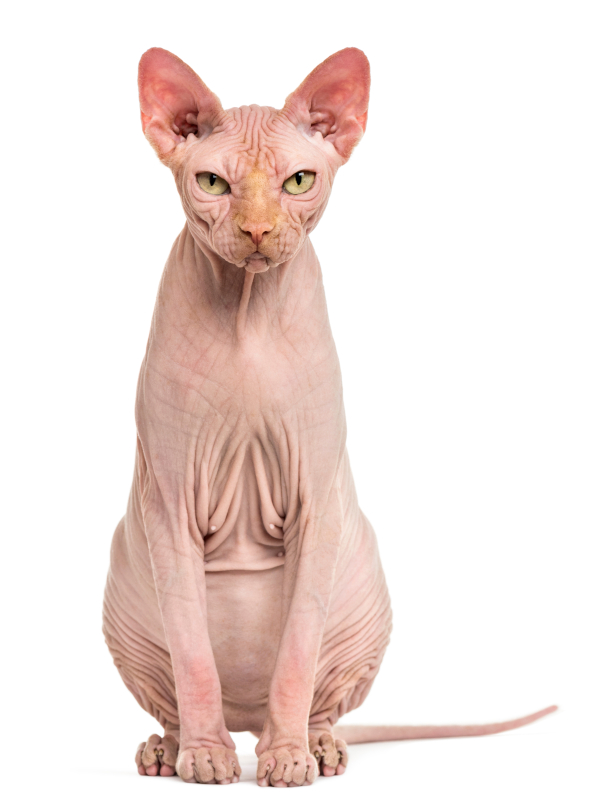
Domestic cats have a variety of coat colors and hair types. Long and short hair phenotypes are common, but there are also other mutations that produce curly and nearly hairless coats. Two of the breeds of cats derived from such mutations are Devon Rex, a curly coat variety that appeared in 1959, and the nearly hairless breed Sphynx, which originated from another mutation in 1966.
Research from Dr. Leslie Lyons’ lab at the University of California, Davis (now at University of Missouri) demonstrated that these 2 mutations are in the gene Keratin 71 (KRT71). The nearly hairless coat of the Sphynx breed is recessive to normal coat, and the curly coat of the Devon Rex breed is recessive to the hairless Sphynx coat.
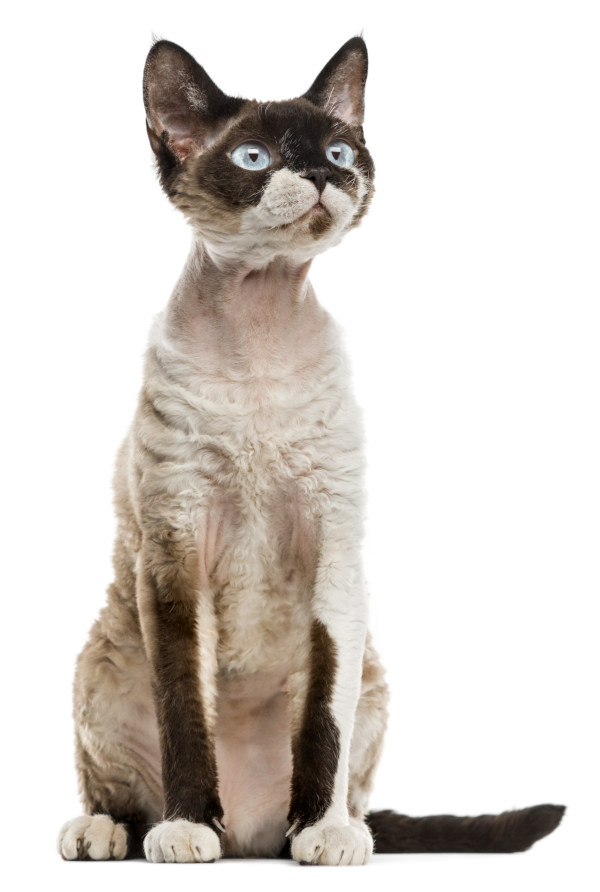
Testing for the Sphynx hairless and Devon Rex curly mutations assists breeders in determining if a cat carries these mutations. For breeders of Sphynx, the tests identify hairless cats that carry the Devon Rex mutation and would not breed true for the hairless phenotype depending on the genotype of the mate.
